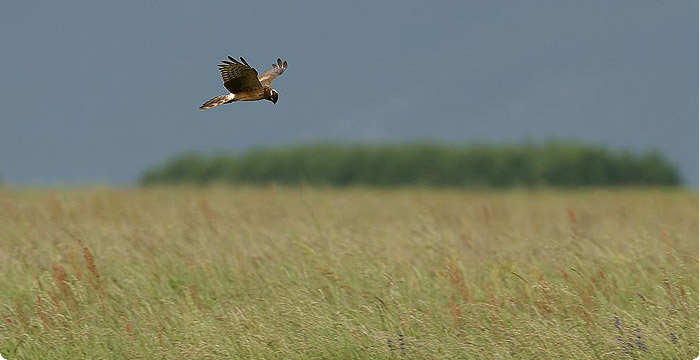
The 100 hectares of the restored magredi began from abandoned uncultivated areas near the Dandolo in Maniago Photo Stefano Fabian
PROJECT ACTIONS
The LIFE MAGREDI GRASSLANDS project has faced a series of issues that menace the integrity of the magredi in the Four Sites of Community Importance: The "Magredi del Cellina" (Magredi of the Cellina), "Greto del Tagliamento" (The Tagliamento Riverbed), "Valle del Medio Tagliamento" (The Middle Valley of the Tagliamento), "Confluenza dei fiumi Torre e Natisone" (the Confluence of the Torre and Natisone Rivers) among which the abandonment of traditional rural activities such as mowing, grazing and timber cutting. The lack of these management measures started a slow process of transformation into woodlands. Another aspect related to the previous one, concerns the invasion of the riverbeds and of the magredi by non-native species favoured by the progressive alteration of the original habitat. These species accelerated the degradation processes of the grasslands and of exotic bushes such as Amorpha fruticosa, and in a lesser way, Buddleja davidii, Ailanthus altissima, Reynoutria japonica, thus making scrub encroachment easier and quicker.
As a result of this process, many dry grasslands, that were once very extensive, are, now, greatly fragmented. Furthermore, the pressure of intensive agriculture also entails the constant risks of permanent grasslands being cleared, as well as of excessive exploitation due to increased irrigation, to mineral and organic fertilizers and to sewage spills. All this favours the almost irreversible alteration of the original vegetation of the magredi thus determining a gradual impoverishment of primitive species, especially the endemic ones.
One of the greatest dangers for the safeguard of such habitats also stems from the negative perception that has made them to be regarded, for a long time, as arid stony expanses of no value since they were empty, unusable spaces.
To avert these threats, the Region, through the LIFE Project, has undertaken a series of operations that aim at restoring the dry grasslands through scrub clearance, mowing and sowing cultivated areas that have subsequently become degraded, through the collection of the seeds and flowers of the cultivated surfaces of the surrounding permanent grasslands. The reintroduction of the typical species of the dry grasslands has been favoured, too, through the propagation and cultivation in nurseries of the rarest and most threatened species. It has also been very important to experiment innovative techniques for in vitro propagation and subsequent acclimatization in the field of botanical essences such as wild orchids that best qualify the arid grasslands. Another fundamental aspect has been that of giving information to the population and getting them involved: in addition to the creation of this website as an interface tool for communicating the project?s results to the inhabitants, two educational publications, a scientific manual for the conservation and the restoration of the grasslands, two leaflets (a Layman's Report and a pamphlet on the incentives for grasslands) have been produced. All this information material that is now available on the website has helped to make people understand the naturalistic importance of the areas and the opportunities tied to the financial help given for the reconversion of arable lands into permanent grasslands and for their future management.
All this educational and information material, now available on the website, has helped understand the naturalistic importance of the areas and the opportunities tied to the financial help offered for reconverting arable lands into permanent grasslands and their future management.
Finally, many guided tours have been carried out and a specific educational project has been implemented for schools.












